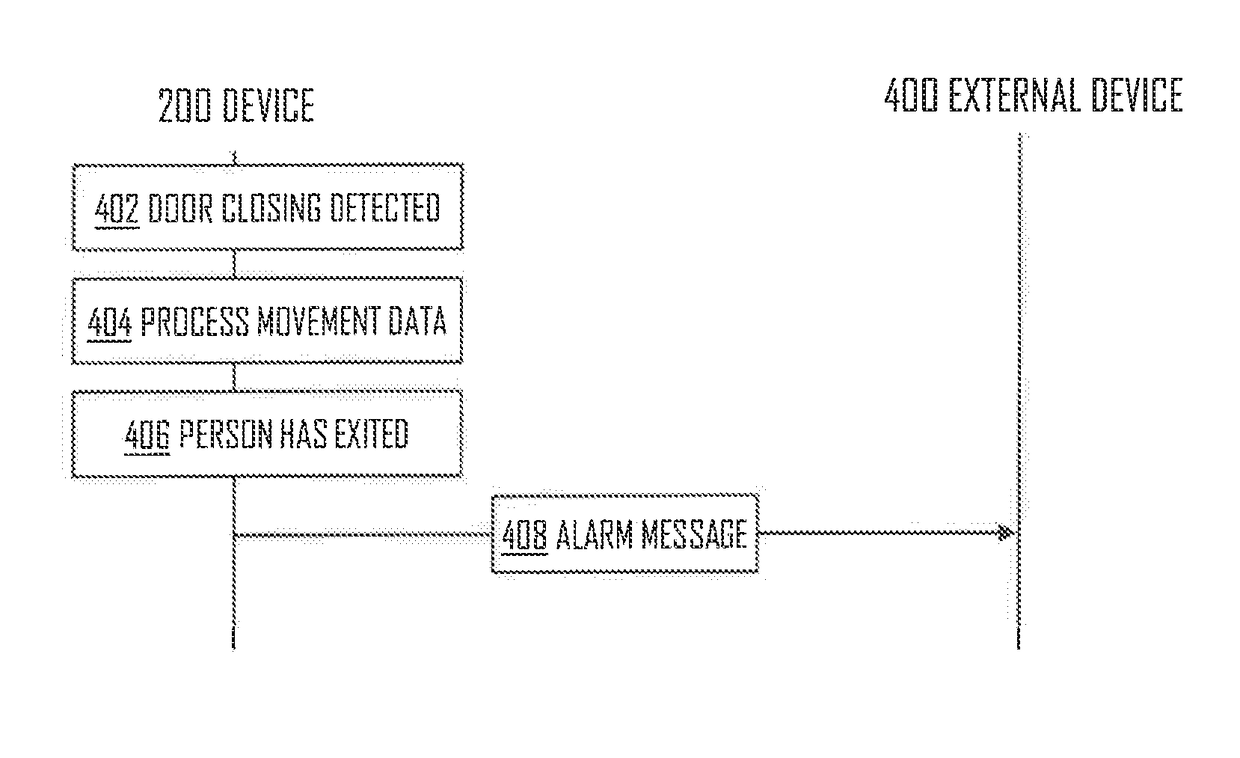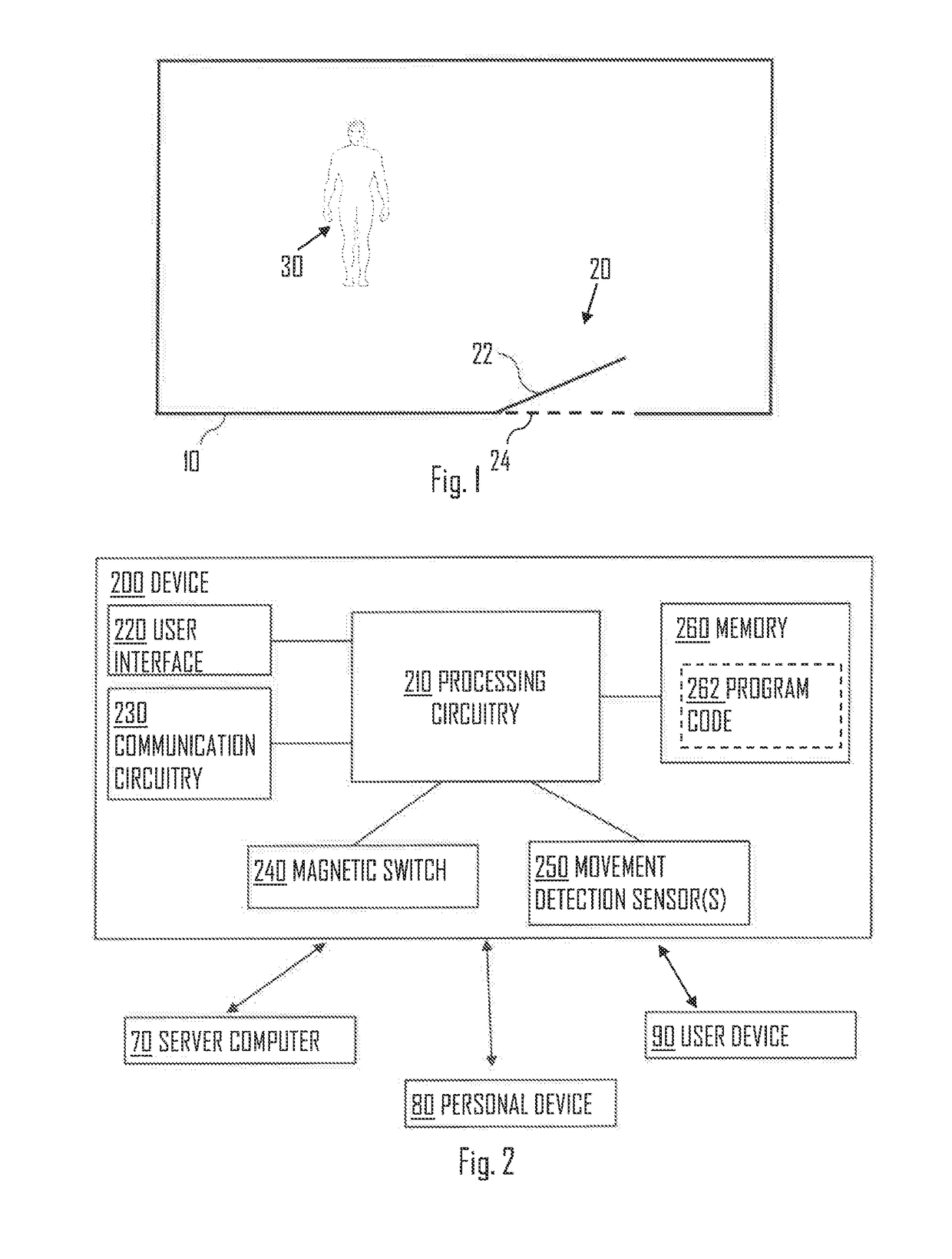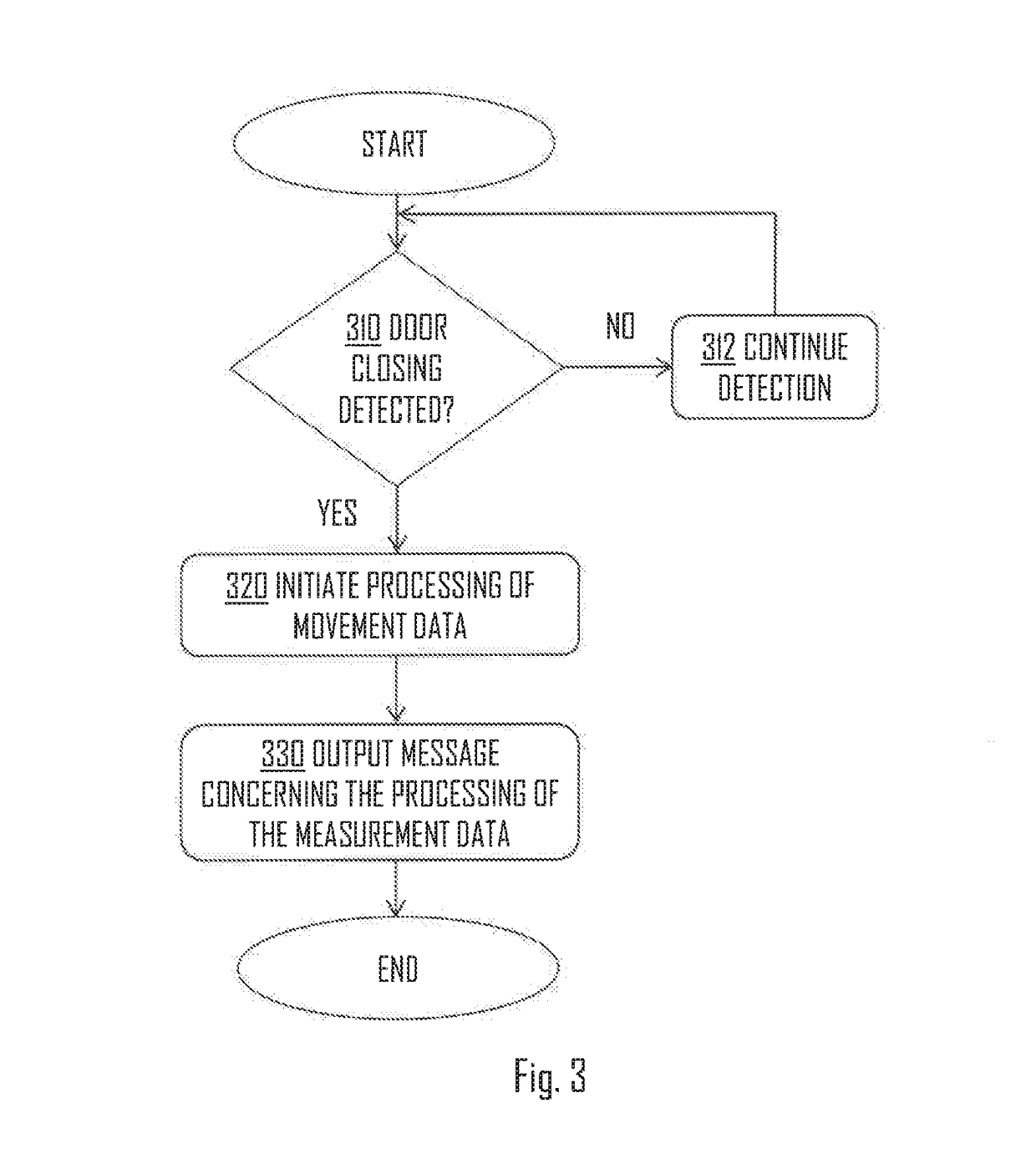Detecting exit of a person from a room
a technology for exiting people and rooms, applied in the direction of alarms, instruments, etc., can solve the problems of achieve the effects of reducing complexity of the system, saving power, and reducing signalling in the system
- Summary
- Abstract
- Description
- Claims
- Application Information
AI Technical Summary
Benefits of technology
Problems solved by technology
Method used
Image
Examples
Embodiment Construction
[0023]The following embodiments are exemplifying. Although the specification may refer to “an”, “one”, or “some” embodiment(s) in several locations of the text, this does not necessarily Mean that each reference is made to the same embodiment(s), or that a particular feature only applies to a single embodiment. Single features of different embodiments may also be combined to provide other embodiments.
[0024]FIG. 1 illustrates an example system to which embodiments of the invention may be applied. Referring to FIG. 1, the system may comprise one or more persons 30. The purpose of the system may be to detect if the person leaves or exits the room 10. The room 10 needs to be understood in a broad sense. For example, the room 10 may refer to any space having encircling walls, a roof or ceiling and a floor. Further, the room 10 has a door 20 or similar means for exiting and entering the room. Thus, for example, the room 10 may refer to a hallway, living room, apartment, patient room, and ...
PUM
 Login to View More
Login to View More Abstract
Description
Claims
Application Information
 Login to View More
Login to View More - R&D
- Intellectual Property
- Life Sciences
- Materials
- Tech Scout
- Unparalleled Data Quality
- Higher Quality Content
- 60% Fewer Hallucinations
Browse by: Latest US Patents, China's latest patents, Technical Efficacy Thesaurus, Application Domain, Technology Topic, Popular Technical Reports.
© 2025 PatSnap. All rights reserved.Legal|Privacy policy|Modern Slavery Act Transparency Statement|Sitemap|About US| Contact US: help@patsnap.com



